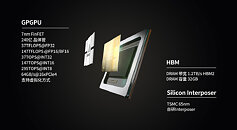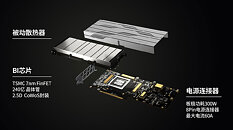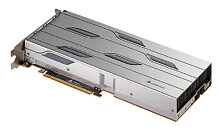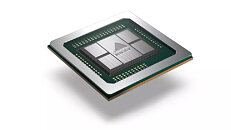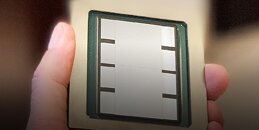
TSMC Unveils Next-Generation HBM4 Base Dies, Built on 12 nm and 5 nm Nodes
During the European Technology Symposium 2024, TSMC has announced its readiness to manufacture next-generation HBM4 base dies using both 12 nm and 5 nm nodes. This significant development is expected to substantially improve the performance, power consumption, and logic density of HBM4 memory, catering to the demands of high-performance computing (HPC) and artificial intelligence (AI) applications. The shift from a traditional 1024-bit interface to an ultra-wide 2048-bit interface is a key aspect of the new HBM4 standard. This change will enable the integration of more logic and higher performance while reducing power consumption. TSMC's N12FFC+ and N5 processes will be used to produce these base dies, with the N12FFC+ process offering a cost-effective solution for achieving HBM4 performance and the N5 process providing even more logic and lower power consumption at HBM4 speeds.
The company is collaborating with major HBM memory partners, including Micron, Samsung, and SK Hynix, to integrate advanced nodes for HBM4 full-stack integration. TSMC's base die, fabricated using the N12FFC+ process, will be used to install HBM4 memory stacks on a silicon interposer alongside system-on-chips (SoCs). This setup will enable the creation of 12-Hi (48 GB) and 16-Hi (64 GB) stacks with per-stack bandwidth exceeding 2 TB/s. TSMC's collaboration with EDA partners like Cadence, Synopsys, and Ansys ensures the integrity of HBM4 channel signals, thermal accuracy, and electromagnetic interference (EMI) in the new HBM4 base dies. TSMC is also optimizing CoWoS-L and CoWoS-R for HBM4 integration, meaning that massive high-performance chips are already utilizing this technology and getting ready for volume manufacturing.
The company is collaborating with major HBM memory partners, including Micron, Samsung, and SK Hynix, to integrate advanced nodes for HBM4 full-stack integration. TSMC's base die, fabricated using the N12FFC+ process, will be used to install HBM4 memory stacks on a silicon interposer alongside system-on-chips (SoCs). This setup will enable the creation of 12-Hi (48 GB) and 16-Hi (64 GB) stacks with per-stack bandwidth exceeding 2 TB/s. TSMC's collaboration with EDA partners like Cadence, Synopsys, and Ansys ensures the integrity of HBM4 channel signals, thermal accuracy, and electromagnetic interference (EMI) in the new HBM4 base dies. TSMC is also optimizing CoWoS-L and CoWoS-R for HBM4 integration, meaning that massive high-performance chips are already utilizing this technology and getting ready for volume manufacturing.






































